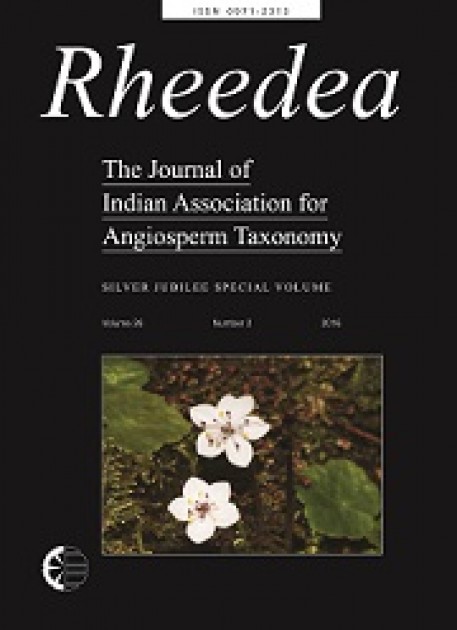Significance of architectural patterns of spermoderm in taxonomic studies of Solanum species from southern Western Ghats, Kerala, India
Anil Kumar V.S., Sunila A.V. & K. Murugan
Published on : 31-Dec-2016
DOI : https://dx.doi.org/10.22244/rheedea.2016.26.02.04
DownloadAbstract
Seed micromorphology can provide stable marker characters valuable for authentication at different level of identification in taxonomic hierarchy. Spermoderm sculpturing patterns of 16 taxa of Solanum were investigated using Scanning Electron Microscope (SEM) to analyse their unique features useful in taxonomic studies. Considerable diversity was noticed in sculpturing of the outer seed coat and lateral seed coat walls (anticlinal walls) with thickened pyramidal bases topped by varied lignified projections. The sculpturing pattern in different taxa varied from cerebelloid and faintly cerebelloid to reticulate and sometimes without conspicuous cell lumens. Further, S. seaforthianum Andrews possesses luxuriant fibrillar or hairy cover on its seed surface. The testal cells also varied from polygonal to isodiametric. In S. seaforthianum, cells were not distinctively seen due to fibrillar cover. The distal appendages when present had finger-like laciniations or fibrils. Except in S. aculeatissimum Jacq., S. seaforthianum, and S. torvum Sw. the lateral testal cell walls of all other taxa could be distinctively seen and their pattern ranged from smooth, papillate to tuberculate. The study emphasises the applicability of seed coat architectural patterns in species discrimination.
